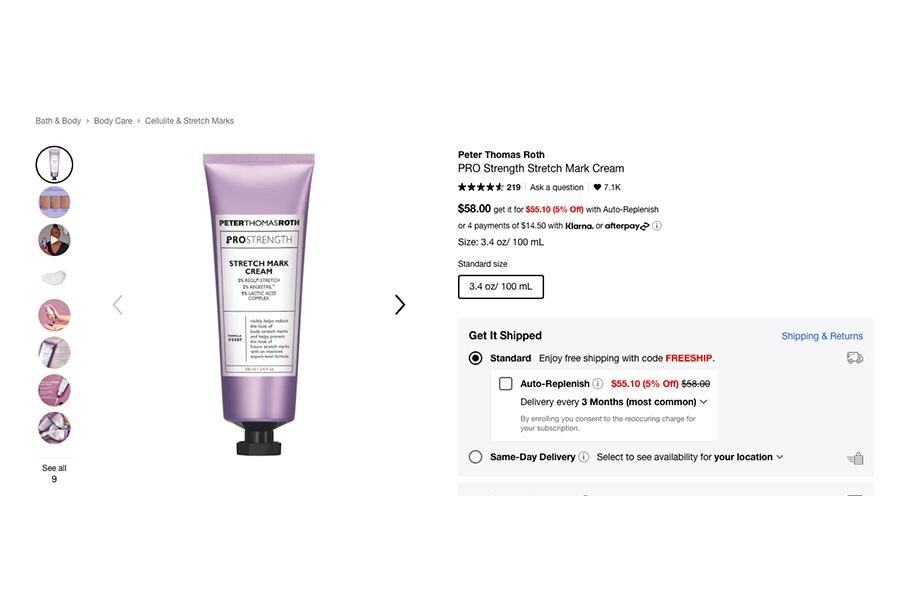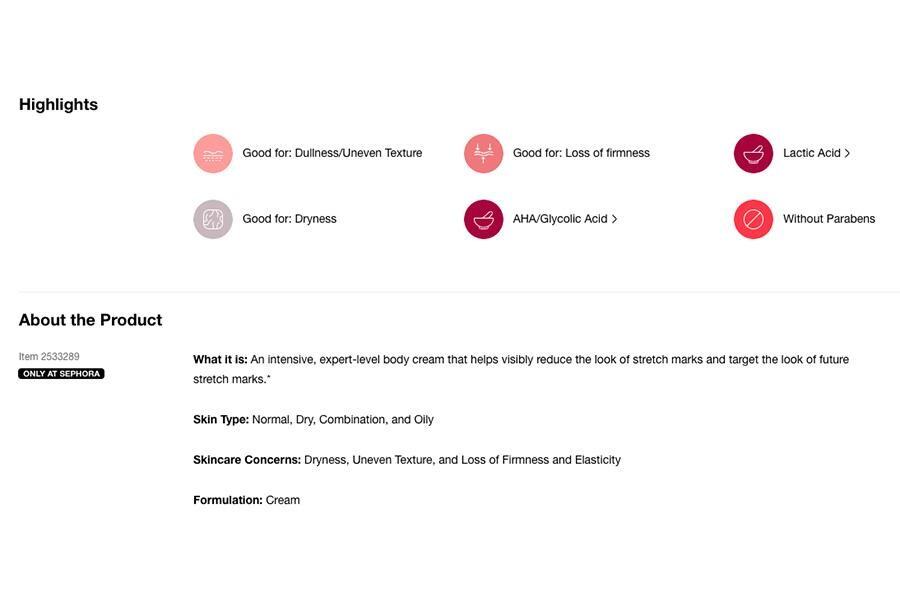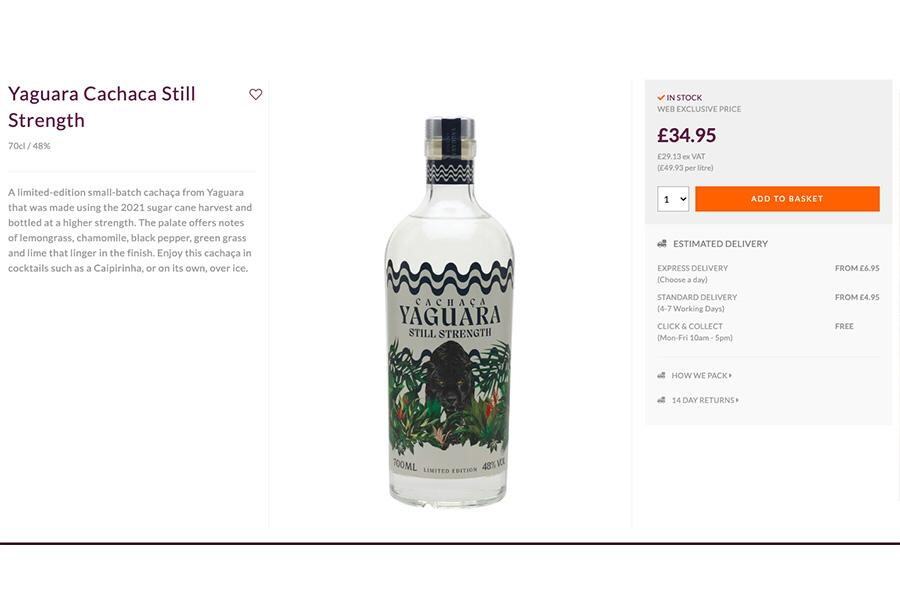When looking at selling anything online, it is important to think about how your products come across — this being the case for both product and service descriptions. In this time of fast information, that means answering all your customers’ questions quickly, simply, and easily. This is done through smartly crafted SEO optimized product descriptions that give the right information.
According to data, 20% of all unsuccessful online purchases are down to a lack of relevant information. Avoid this by constructing product descriptions that talk to your customer, giving them the relevant information and conveying to them why your product is a must-have item. Read on to learn how to write a product description that will speak to your customers and drive sales conversions.
Table of Contents
What is a product description?
What does a good SEO optimized product description look like?
2 examples of great product descriptions
Conclusion
What is a product description?
A product description offers an overall definition of what a product is and how it can be used to give a consumer all the information they need to be convinced to buy a product. This is why product descriptions are a key part of any retailer’s conversion and marketing funnel. Product descriptions can be varied and include catchy titles, but these should not be at the expense of the core information. In the below image, “Maui Moisture – For Weak Brittle Hair” is a good example of a title that conveys the relevant information, remains catchy, and uses an SEO optimized product description.
Effective SEO product descriptions are able to create a story to illustrate how the product can be used and why it is essential to your customer—giving use cases and scenarios in persuasive language is one example of this. Product writing itself is more complex than it may appear however, as a good product description must entice the consumer by being relevant and visually appealing. This is done by using great product photos, structuring your description with purpose, and incorporating frequently searched questions and keywords into the text. Keywords will ensure that the product description appears as much as possible in search engines and is answering the right questions—in essence, search engine optimization (SEO).
What does a good SEO optimized product description look like?
When thinking about how to describe a product for sales conversion, it is important to think outside the box. Product descriptions should not just describe a product, but should sell to real people, showcasing real use cases. Product descriptions should be crafted with the following in mind:
Know your ideal customer and answer their questions
Before anything, it is important to know your brand and ideal customer. Who are you selling to? What is it about this product that they would love? Use that information to write product descriptions that appeal to them.
Create informative and catchy titles
Creating a title for your product that catches the eye is important, but it should not be at the expense of the information itself. Craft edgy titles that fit with your brand and tell the customer what they are looking at.
Use superlatives and seductive language
Language can be engaging and seductive. Accentuate the best of your product by crafting a picture through language—think of the silky, glossy hair offered by many shampoos.
Tell stories of how the product can benefit the user
Seeing a product and having it described is one thing, but imagining yourself using that product in a real life scenario is quite another. Craft stories to show how the product can make your customers’ stand out, how it can make their life easier, and more.
Use data and social proof to back up those benefits
Using data and evidence, such as social proof, to back up why your customer needs your product is a game changer. You may tell people they need your exercise equipment, but if you can give statistics showing the success your product has had, then you can really convince them.
SEO optimize
By using frequently searched for keywords and questions in your product description, you can answer your customer’s most asked questions and optimize for conversion. Optimizing based on search volume will also mean that your products are more likely to get seen, as they will rank higher on a search engine’s pages. Make sure you use appropriate keywords for the description.
Structure your text to improve readability
Last, but certainly not least, make sure your text is structured in an easy-to-read way. There is nothing more off putting than struggling to understand what someone is selling or struggling to find the right information (such as sizing or ingredients). If your text is hard to read or missing vital information, this only leads to one thing—cart abandonment.
2 product description examples for powerful sales conversion
Product description example #1: PRO Strength Stretch Mark Cream
This stretch mark cream, available from Sephora, uses a good product description and language to establish itself as a cream that really works. In its name, wording such as “pro” and “strength” make it seem like a professional cream that isn’t messing around. This style of wording continues in its description, where it is referred to as “An intensive, expert-level body cream.” This will appeal to its main customer: women who have, or are afraid of getting, stretch marks. This customer is not interested in products with flowery language, they want a product that will help them have firm stretch mark free skin—they want the pros, the experts, and the strength. The image below shows how the PRO Strength Stretch Mark Cream is illustrated simply and professionally.

These claims are then backed up by data, further emphasizing that this is a “pro” cream that will “visibly reduce the look of stretch marks and target the look of future stretch marks.”

In addition, although not beautiful, the product description is laid out in a very clear way, which allows consumers to find the information they need quickly—another nod to its “down to business” professional attitude. This also proves that a high converting product description doesn’t have to be beautifully laid out, but can simply be clear, short, and to the point.

Product description example #2: Yaguara Cachaça Still Strength
Alcohol, alongside cars and perfumes, is a great place to look for beautifully crafted product descriptions. This product description for Yaguara Cachaça is a great example of creating a narrative of tradition and flavor to sell a product.
Starting off, a brief no-nonsense description of the ingredients, strength, and flavors is given, while also emphasizing a key selling point (that it is limited edition): “A limited-edition small-batch cachaça from Yaguara that was made using the 2021 sugar cane harvest and bottled at a higher strength.” Alongside this, it offers a little extra information to highlight expertise “Enjoy this cachaça in cocktails such as a Caipirinha, or on its own, over ice.” This initial blurb is enough to pique the curiosity of those customers in the market for something a little exotic, while not overloading them with information, meaning that if they so choose, they can scroll down to learn more. The basic price, packing, and return policies are also offered clearly alongside it for full transparency.

The product description for Yaguara Cachaça gives all the key information immediately, thereby peaking the interest but not boring the consumer. Then, if they so choose, they can scroll down to learn more
Once interest has been sparked, the customer will see that directly below they can learn more about the product. Here, the narrative is introduced.
The narrative is crafted in a way that makes the consumer feel it is a wholesome family product, an “artisanal cachaça” perfected over “five generations of family tradition,” and made with “hand-cut sugar cane that is crushed the same day it is harvested.” Through this, the consumer sees a picture of the product being lovingly created and begins to think how nice it would be to buy as a gift or keep for a special occasion. They can even feel good about it, as “its processes are as environmentally sustainable as possible.” The below image illustrates how Yaguara has used this wording to sell a mood and narrative about their brand.
Finally, the product is given an extra send-off, with the additional expertise (which cocktails it is best with) and a comparison to another, perhaps better known, rum (Agricole rum from Martinique) in order to establish itself in the market—a different use of information, data, or statistics. This addition of visual elements and gifts, such as recipes, can be a great way to add more information about a product, and create trust with the consumer.
Conclusion
When writing an SEO optimized product description, it is important to remember who the consumer is, and what is important to them. This core question should be answered through the description, which should always point back to what it does for your customer—does it accentuate the curves of the body? Create remarkable cocktails? Offer unimaginable sound quality?
Winning product descriptions are created through cleverly crafted text that describes the product, makes the consumer feel that they cannot do without it, and creates a story or feeling. This can all be accomplished by answering the right questions, backing up those claims, and offering a product in a way that it is completely understood and presented as an experience. Finally, SEO is paramount if your product description is ever to be read, and is also an ideal tool in helping you understand what your customers are looking for right now. Having the right product optimization strategy in place will only help to elevate your products and businesses pages.



